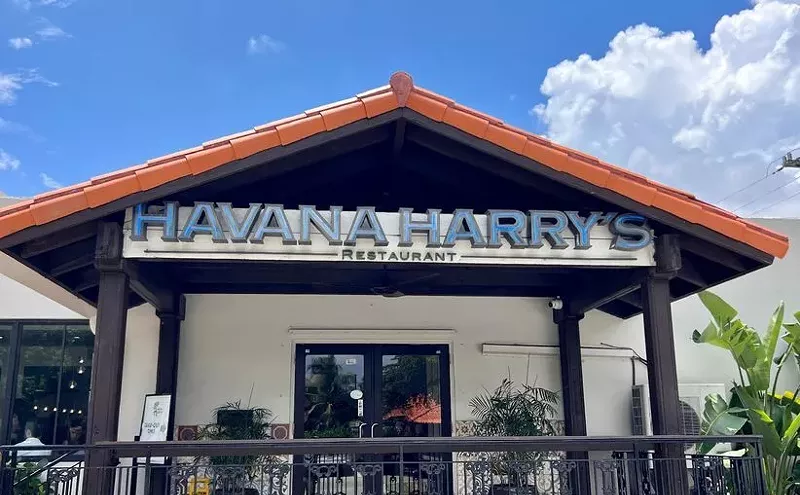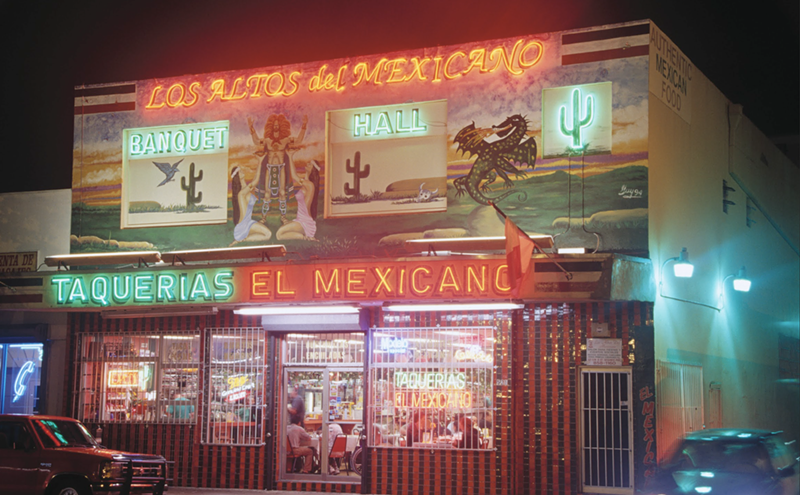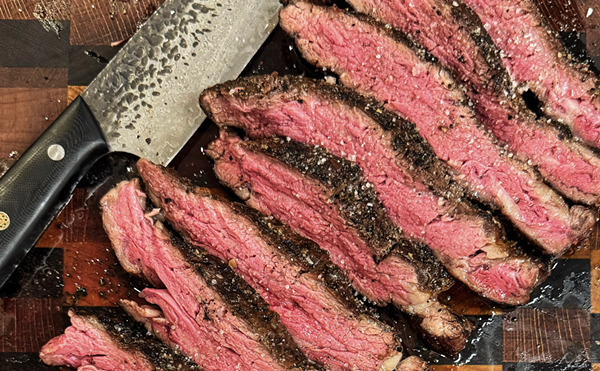Imlee's stylishly casual décor gives immediate notice that this is not the standard South Florida Indian joint. And much, if not all, of Imlee's food backs up this promising first impression ... in due time. Which is not immediately. Munchies of crisp lentil pappadams with mango chutney (listed on the menu as costing, respectively, $1.95 and $2.45 but provided free) sate starving stomachs while diners wait. And wait.
Ordered appetizers were all tasty yet not entirely successful, owing mainly to timing. An assorted vegetable platter, for instance, arrived with all the vegetable pakoras (battered fritters) and butawada (battered potatoes) stone cold. The only item that arrived hot from the deep fryer (and obviously the culprit responsible for the delay), a vegetable samosa, was by far the platter's winner. Still the chili-spiked mashed potato-pea filling's wrapping, described as a "crêpe," was more like the outside of a prefab pie crust in both substance and subtlety. Much better was paneer pakora, though it bore no resemblance to usual pakoras, since the dish was unbattered. Paneer basically is a compressed yogurt, kind of like tofu, only tasty. This appetizer was a "sandwich" of two paneer rectangles, with a spiced spinach filling -- an inspired idea, if inaccurately described.
Malai kofta, defined on the menu as a dish of soft cheese and vegetables in mild creamy sauce, also was a puzzlement in terms of its description. We ordered the dish because it was listed as a "vegetarian specialty"-- a rare find, since normally malai kofta is meatballs in a creamy butter-enriched tomato sauce; a version substituting paneer for meatballs sounded intriguing. But the sauced balls that arrived at our table were nothing like Indian yogurt cheese (or any other nation's cheese I've ever sampled) in either taste or texture. They tasted like meatballs. This does not mean they were meatballs. Boca Burgers, after all, do a great ground-beef imitation, so Imlee's slightly more delicate constructions could certainly have been similarly vegetable-based. But the soft starchy balls definitely were not the paneer the menu leads one to expect. And the sauce, though creamy as advertised, definitely was not mild.
Daal makni also was an unusual treatment, starting with the dish's name, normally spelled dal (or occasionally dahl) makhani. "Dal" just means "legumes," which can mean anything from split peas to garbanzos. But the most widely used dal in Indian cuisine is lentils, and the most frequently encountered preparation in U.S. Indian restaurants is a simple purée enriched with minimally spiced (maybe a tad of turmeric) makhan, or butter. This dal is used more as a tongue-soothing sidekick to highly spiced entrées than as a star feature itself. In India, though, the spice-perfumed butter can contain, depending on region, flavorings as intense as mustard seed and truly mean green chilies. And so it goes at Imlee, where the dal featured strong hints of cilantro, fresh ginger, and highly concentrated tomato, plus a big-league burn. In fact the chilies were so searing that no butter richness whatsoever was discernable.
The fiery favorite, though, was kadai shrimp, the name referring to cooking in a cast-iron wok (called in India a kadai, karahi, or karai). In Britain this cooking style is called balti, and it's been all the rage for several years, probably because it's different; traditionally India tends toward slow-cooking methods that allow flavoring agents to permeate ingredients (like braising, stewing, or roasting) rather than sautéing or stir-frying. But it would be hard to imagine stronger flavoring than the rich -- and incendiary -- tomato coating covering this dish's five firm, precision-cooked jumbo prawns.
Mixed vegetables korma was less mixed than expected. Carrots and potatoes predominated, with onion only a secondary influence; the fresh green peas plus cauliflower or young turnips one usually finds in this preparation were absent. The dish's gravy, though, was terrific. Described on the menu as curry sauce, it actually was a close-to-classic korma braising liquid: creamy and slightly tangy, needing only a bit more thickness to truly adhere to the vegetable chunks as a korma's smooth sauce should. This was the only entrée emphatically ordered mild on a first visit, and the only entrée that came without substantial scorch.
On a second visit, chicken tikka masala ordered mild was near perfect, the tikka (cutlet) itself a bit dry to my taste but moistened by a cream-sauce coating. Flavored with a complex masala characterized by moderate amounts of many spices, the velvety sauce was not hot but also not bland, allowing the taste of the dish's onions and green peppers to emerge.
Paneer jahlfrezi brought the temperature back up. But this is as it should be with a jahlfrezi preparation: cooked with fresh chilies. And the innovative substitution of paneer for the poultry chunks worked wonderfully. (For carnivores standard chicken jahlfrezi also is available.)
Accompaniments, all those breads and yogurt-salad sides that many of us find the most fun part of an Indian meal, were a mixed success. Raita was a bountiful version containing tomatoes as well as cucumbers but like almost all Western-world raitas was more soupy than substantial -- quite impossible to eat with fork or fingers, quite impossible to keep from running into and saturating everything else on one's plate. And in terms of breads, yap naan, an unusual raisin-and-onion-stuffed tandoor-cooked bread, was savory but sodden, while griddle-fried aloo paratha was almost as flat as an old 78-rpm record -- and lots tougher. Onion kulcha, though, was warm, crisp, and terrific.
Last but not least: the lassi, which I recommend should be your first as well as last order. There are other desserts, some typical (though terrific, like a kulfi ice cream) and some strange but typically Imlee, like semiya payasam, a concoction of milk, nuts, and vermicelli. There are other beverages, too, including Indian Kingfisher beer. But no beverage beats this slightly sweetened yogurt drink as a miracle extinguisher of flaming taste buds. And no dessert beats it for rich yet refreshing taste. I hereby nominate Imlee's lassi as next year's Best Milkshake for Consenting Adults.












